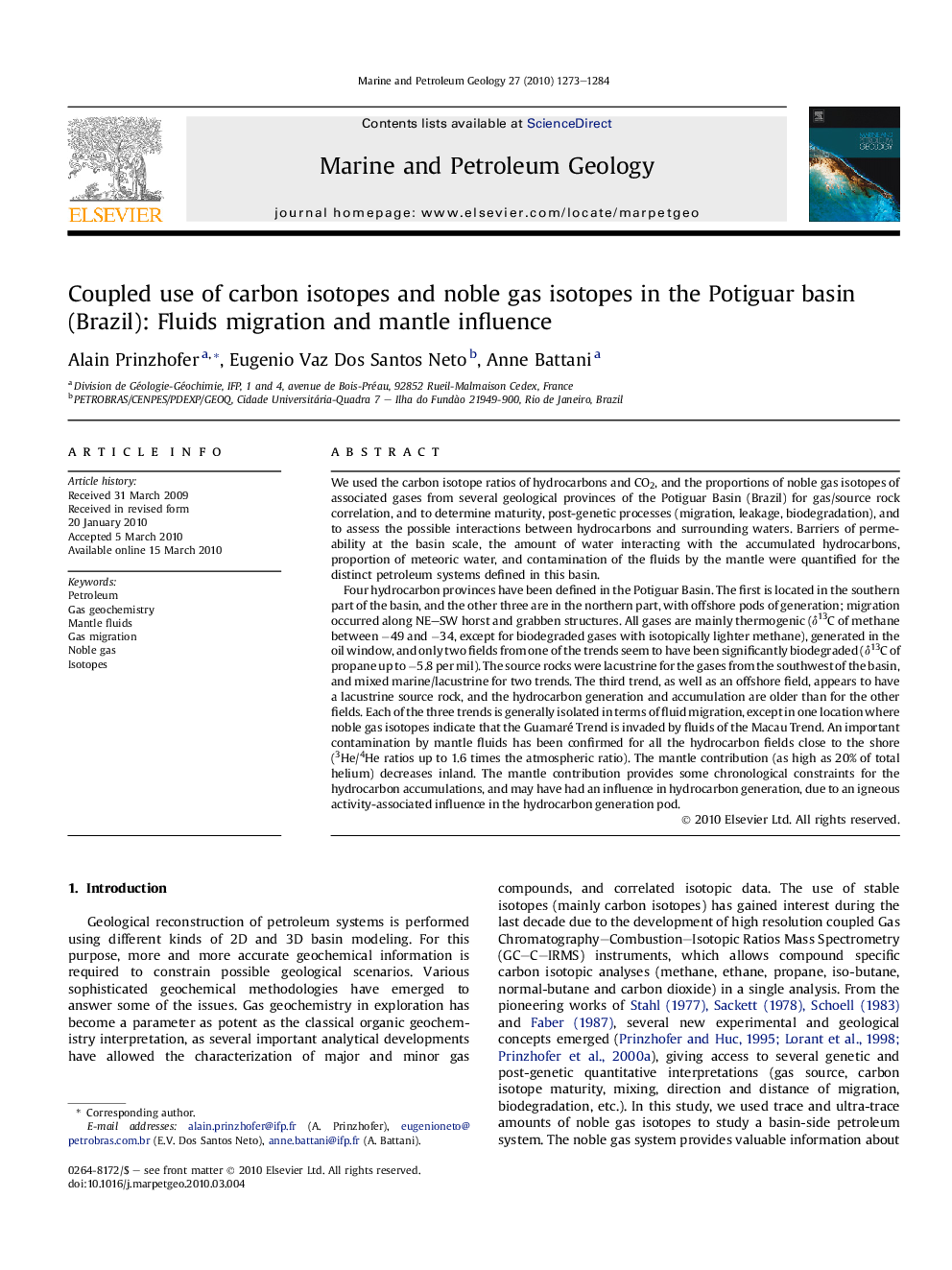| Article ID | Journal | Published Year | Pages | File Type |
|---|---|---|---|---|
| 4696173 | Marine and Petroleum Geology | 2010 | 12 Pages |
We used the carbon isotope ratios of hydrocarbons and CO2, and the proportions of noble gas isotopes of associated gases from several geological provinces of the Potiguar Basin (Brazil) for gas/source rock correlation, and to determine maturity, post-genetic processes (migration, leakage, biodegradation), and to assess the possible interactions between hydrocarbons and surrounding waters. Barriers of permeability at the basin scale, the amount of water interacting with the accumulated hydrocarbons, proportion of meteoric water, and contamination of the fluids by the mantle were quantified for the distinct petroleum systems defined in this basin.Four hydrocarbon provinces have been defined in the Potiguar Basin. The first is located in the southern part of the basin, and the other three are in the northern part, with offshore pods of generation; migration occurred along NE–SW horst and grabben structures. All gases are mainly thermogenic (δ13C of methane between −49 and −34, except for biodegraded gases with isotopically lighter methane), generated in the oil window, and only two fields from one of the trends seem to have been significantly biodegraded (δ13C of propane up to −5.8 per mil). The source rocks were lacustrine for the gases from the southwest of the basin, and mixed marine/lacustrine for two trends. The third trend, as well as an offshore field, appears to have a lacustrine source rock, and the hydrocarbon generation and accumulation are older than for the other fields. Each of the three trends is generally isolated in terms of fluid migration, except in one location where noble gas isotopes indicate that the Guamaré Trend is invaded by fluids of the Macau Trend. An important contamination by mantle fluids has been confirmed for all the hydrocarbon fields close to the shore (3He/4He ratios up to 1.6 times the atmospheric ratio). The mantle contribution (as high as 20% of total helium) decreases inland. The mantle contribution provides some chronological constraints for the hydrocarbon accumulations, and may have had an influence in hydrocarbon generation, due to an igneous activity-associated influence in the hydrocarbon generation pod.
